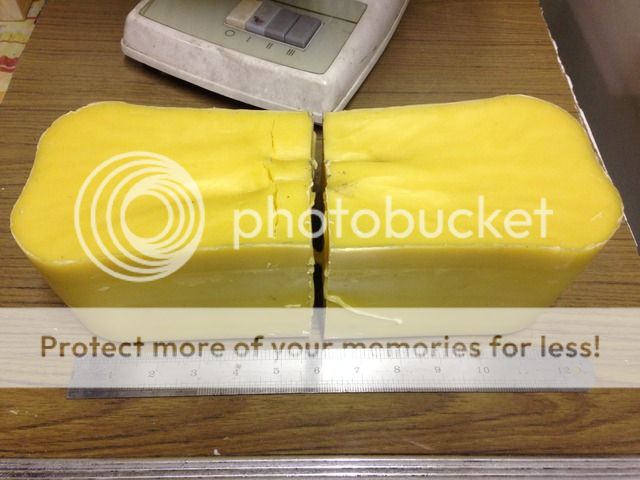Page 1 of 1
Bees Wax
Posted: Sun Oct 18, 2015 1:41 am
by mite5255
Dropped in to see a mate today who just happens to have a few bee hives, He asked if I wanted some bees wax, he walked inside his house and came back out with a tub of dirty wax and said I can have this but I'll need to melt and filter it. So after melting and filtering I ended up with a 3 KG (6.6lb)
I now need to ask, is there any difference between bees wax a commercial molding wax.

Re: Bees Wax
Posted: Sun Oct 18, 2015 7:18 am
by dallen
commercial molding wax is a blend, which I'm sure if you looked around you could find a recipe. If you make soap it works great for that along with about a thousand other things
Re: Bees Wax
Posted: Sun Oct 18, 2015 4:00 pm
by Rasper
Metal casters in isolated places have to make their own wax. Bee's wax is a one of the important components. They use such other things as rosin and paraffin to make it harder. One of the things used a lot in the modern era is polyethylene, as in plastic bags. Not the crinkly kind but the transparent kind such as Zip Loc bags.
Richard
Re: Bees Wax
Posted: Mon Oct 19, 2015 9:20 am
by F.C.
Nice score, Mike.... Bees wax is a primary ingredient in making a good workable modeling wax. I have a recipe for a good modeling wax I'll give ya (soon as I can locate it on one of my zip drives). Like Rasper mentioned, it involves paraffin as well. I use a blend of microcrystalline, paraffin and bees wax which has served me well over the years. I'll post the recipe soon as I locate it. You can also make a good modeling clay with it, as well. I'll post that recipe, too, as it's with the other recipe location.
Re: Bees Wax
Posted: Tue Oct 20, 2015 1:35 am
by mite5255
Rasper wrote:Metal casters in isolated places have to make their own wax. Bee's wax is a one of the important components. They use such other things as rosin and paraffin to make it harder. One of the things used a lot in the modern era is polyethylene, as in plastic bags. Not the crinkly kind but the transparent kind such as Zip Loc bags.
Richard
With me being employed in the plastic industry I do have access to a variety of different types of plastic, polypropylene and pvc being the main ones that we use. I have made machinable wax using polypropylene and wax, problem is I cannot remember if the wax blocks that I have are paraffin or microcrystalline, I do think it may be paraffin tho, but cannot be sure
Re: Bees Wax
Posted: Tue Oct 20, 2015 1:37 am
by mite5255
F.C. wrote:Nice score, Mike.... Bees wax is a primary ingredient in making a good workable modeling wax. I have a recipe for a good modeling wax I'll give ya (soon as I can locate it on one of my zip drives). Like Rasper mentioned, it involves paraffin as well. I use a blend of microcrystalline, paraffin and bees wax which has served me well over the years. I'll post the recipe soon as I locate it. You can also make a good modeling clay with it, as well. I'll post that recipe, too, as it's with the other recipe location.
Thanks Frank,

Re: Bees Wax
Posted: Tue Oct 20, 2015 7:58 am
by Jammer
http://www.myheap.com/casting-molding/m ... waxes.html
Here's Overman's wax recipes. I've tried to make some of them. Some of the "special" waxes are a little pricey for me.
Re: Bees Wax
Posted: Tue Oct 20, 2015 4:23 pm
by Rasper
I cannot remember if the wax blocks that I have are paraffin or microcrystalline, I do think it may be paraffin tho, but cannot be sure
Paraffin has a much coarser structure than microcrystalline wax. That's why it's called micro - - crystalline. (Which never occurred to me until I read it somewhere.) Anyway, you can tell just by breaking it in half and looking at the structure of the break.
Paraffin has one quality that limits its usefulness in investment casting—it expands a lot as it melts; it will crack your molds. Probably some of the recipes that have been developed over the years that use it have other ingredients that limit that behavior.
Neither paraffin nor microcrystalline wax even existed until the oil industry got going back in the late nineteenth century, so they do not have a long history; whereas metal casters have been using the animal and plant based waxes for thousands of years.
Richard

